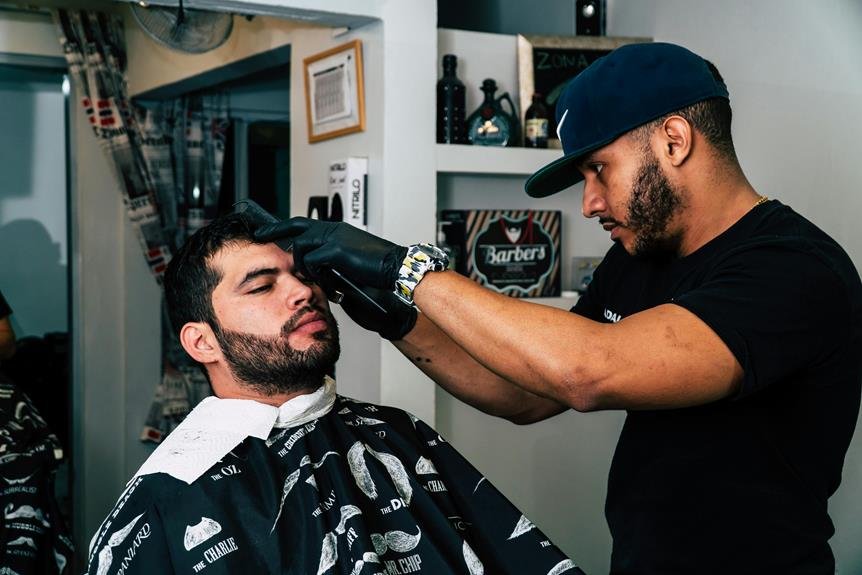
When it comes to caring for damaged hair, selecting the right products is crucial. With so many options available, it can be overwhelming to determine which ones will truly make a difference in restoring your hair's health. From nourishing shampoos to reparative conditioners and revitalizing oils, the market offers a plethora of solutions. But how do you navigate through the sea of choices to find the best ones tailored to your specific needs? Let's explore some key ingredients and products that could potentially transform your damaged locks into luscious, healthy strands.
Top Shampoos for Damaged Hair
When selecting shampoos for damaged hair, opt for those specifically formulated to repair and strengthen your hair strands. Look for shampoos containing ingredients like keratin, biotin, and vitamins E and B5. These components work to nourish and rebuild your hair from within, promoting healthier and stronger locks. Avoid shampoos with sulfates, as they can strip away natural oils and further damage already fragile hair.
Choose shampoos that cater to your specific hair needs, whether it's for hydration, color-treated hair, or frizz control. Brands like Olaplex, Redken, and Briogeo offer excellent options tailored for damaged hair. Consider sulfate-free shampoos if you have chemically treated or dry hair, as they're gentler and help retain moisture.
When washing your hair, focus on massaging the shampoo into your scalp to cleanse away dirt and buildup while being gentle on the lengths and ends. Rinse thoroughly with lukewarm water to prevent stripping your hair of essential oils. Remember, using the right shampoo is the first step towards restoring your hair's health and vitality.
Best Conditioners for Repairing Hair
For repairing damaged hair, consider using conditioners infused with keratin and argan oil for optimal nourishment and restoration. These ingredients are known for their ability to strengthen and repair hair from within, leaving it smooth and revitalized. Look for conditioners specifically formulated for damaged hair, as they often contain higher concentrations of these repairing ingredients.
When selecting a conditioner, opt for one that's free of sulfates and parabens, as these harsh chemicals can further damage already compromised hair. Instead, focus on products that are rich in natural oils and proteins to help replenish moisture and improve the overall health of your hair.
After shampooing, apply the conditioner generously from mid-length to the ends of your hair. Leave it on for a few minutes to allow the nourishing ingredients to penetrate the hair shaft. Rinse thoroughly with cool water to seal the cuticles and lock in the moisture, leaving your hair looking and feeling stronger and more manageable.
Essential Oils for Hair Restoration
To promote hair restoration, incorporating essential oils into your hair care routine can provide nourishment and support for healthier strands. Essential oils like lavender, rosemary, and peppermint are known for their ability to stimulate hair follicles, promote circulation to the scalp, and encourage hair growth. These oils also possess antibacterial and antifungal properties, which can help maintain a healthy scalp environment.
Lavender essential oil is soothing and can help reduce scalp inflammation, while rosemary essential oil is believed to increase cellular metabolism, leading to improved hair growth. Peppermint essential oil has a cooling effect and can help alleviate scalp dryness and itching. When using essential oils for hair restoration, it's important to dilute them with a carrier oil like coconut or jojoba oil to avoid irritation.
Incorporating essential oils into your hair care routine can be as simple as adding a few drops to your shampoo or conditioner, creating a DIY hair mask, or using a specialized treatment product. Experimenting with different essential oils and finding the ones that work best for your hair type and concerns can help you achieve stronger, healthier hair.
Leave-In Treatments for Damaged Hair
Consider incorporating leave-in treatments into your hair care routine to help nourish and repair damaged strands effectively. Leave-in treatments are a convenient way to provide ongoing care for your hair throughout the day. Look for products containing ingredients like keratin, argan oil, coconut oil, or shea butter, as these can deeply penetrate the hair shaft to provide moisture and strengthen the hair from within.
When applying a leave-in treatment, focus on the mid-lengths and ends of your hair, where damage is often most noticeable. Avoid applying too close to the roots to prevent weighing down your hair or making it look greasy. Depending on your hair type and level of damage, you can choose between cream-based or spray leave-in treatments for a lightweight or more intense treatment.
Using a leave-in treatment regularly can help improve the overall health and appearance of your hair, making it smoother, shinier, and more manageable. Incorporate this step into your hair care routine to give your damaged hair the extra care it needs to recover and thrive.




